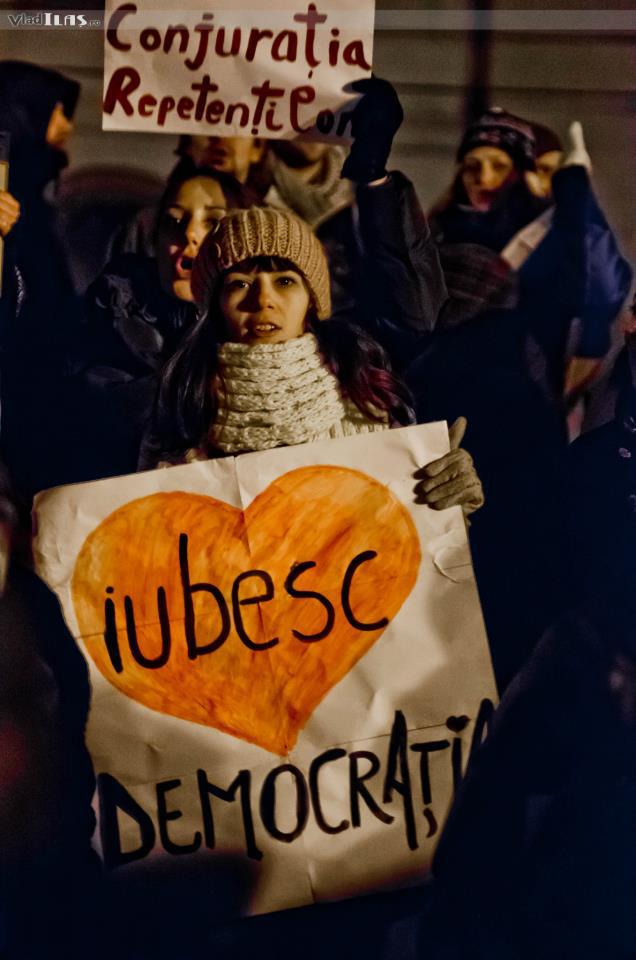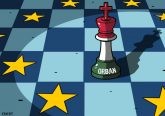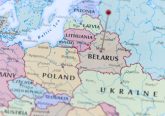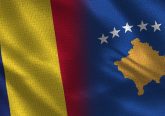 Internet protesting is a concept that has yet to be coined and theoretically conceptualized, even though it exists in practice and has been extensively used during the 2011-2 mass protests that have swept a number of countries in the Arab world in particular and, more recently, Eastern and Southern Europe as well. I will start by, first, providing a starting definition for “internet protesting.” Then, I will apply it to the context of the January-February 2012 Romanian protests. For the purposes of this article, I will argue that “internet protesting” refers to the use of social media, in particular social media websites, such as Facebook and Twitter, to organize and continuously fuel a public manifestation as well as provide a direct and relatively unbiased source of information on its progress and outcomes. In this process, the social media websites often become engagement platforms among the protesters themselves, but also between them and the wider public, including those who do not participate in/support the manifestations, in order to discuss the protests’ problems and/or success, but also their objectives.
Internet protesting is a concept that has yet to be coined and theoretically conceptualized, even though it exists in practice and has been extensively used during the 2011-2 mass protests that have swept a number of countries in the Arab world in particular and, more recently, Eastern and Southern Europe as well. I will start by, first, providing a starting definition for “internet protesting.” Then, I will apply it to the context of the January-February 2012 Romanian protests. For the purposes of this article, I will argue that “internet protesting” refers to the use of social media, in particular social media websites, such as Facebook and Twitter, to organize and continuously fuel a public manifestation as well as provide a direct and relatively unbiased source of information on its progress and outcomes. In this process, the social media websites often become engagement platforms among the protesters themselves, but also between them and the wider public, including those who do not participate in/support the manifestations, in order to discuss the protests’ problems and/or success, but also their objectives.
Applied to the Romanian context, internet protesting played a vital role in organizing the public manifestations that have been sweeping the country ever since. On January 10, 2012, an important national figure, Mr. Arafat, resigned, as a result of his discontent over proposed reforms to the emergency medical system under a new health law and of criticisms from Romanian President Traian Basescu. Facebook and Twitter were immediately flooded with posts expressing solidarity with him and disappointment and anger against the President’s attitude. Soon afterwards, a Facebook event announced a peaceful gathering for February 12, 2012 in the center of Targu-Mures, the city where SMURD, the mobile emergency service that Mr. Arafat established in 1991, first operated. The purpose of the announced meeting was to express solidarity with Mr. Arafat’s proposals for the new health law.
On February, 12, at the time and place set by the Facebook event, over 3,000 citizens gathered on the streets of Targu-Mures, a number unprecedented for this post-communist country since the early 1990s. As soon as the Targu-Mures success hit televised news, a similar event sprung up and was rapidly distributed on Facebook. It announced a solidarity protest for the next day in the center of Bucharest, Romania’s capital city. On this page, Bucharestians not only started confirming their personal intention to participate, but also highlighting the importance of generalized participation in this event, thus building momentum for what was to come. In the end, over 2000 people came out on January 13, 2012, and, since then, daily protesting has never ceased. Similarly, in most other cities, where the protests spread afterwards, such as Suceava and Cluj, the actual public gatherings were preceded by the establishment of a Facebook page announcing them.
Could the Romanian protests have occurred without the social media build-up and without the Facebook event pages? While it is difficult to give a precise answer to this question, for obvious reasons, I would nevertheless say that the momentum and scale of the manifestations would have most likely been lost. To begin with, Facebook and Twitter were initially used a forum, where, moments after Mr. Arafat’s resignation, concerned citizens were able to express their solidarity with Mr. Arafat and displeasure with the President’s decision. Simultaneously, through the creation of solidary groups, such as Salvare pentru SMURD, which numbers of fans surged by the hour, they could see this anger was shared by many other citizens. This tremendous Facebook activity created the impression that many Romanians were united in their discontent about this particular political situation.
In organizing a protest, the central problems consist of the difficulty of gathering people and the persistent uncertainty that people might not show up to demonstrate. Without solving these issues completely, Facebook events, in particular, in many ways diminished them. In the Romanian context, the Facebook events’ pages established the location and time for the protests at least one day in advance, allowing people the opportunity to adjust their schedules, so as to be able to take part in the protests, if so inclined. Moreover, the events’ pages allowed one to continuously invite people, thus increasing the visibility of the protests’ visibility and the likelihood of getting more participants. Moreover, people were able to state that they were coming and their reasons for coming as well as their anger at the situation, which build anticipation for the protests. Without these Facebook events’ pages, the protests might have either never happened or would have likely been more scattered, as people might have grouped in different areas of their cities, and less enthusiastically.
While Facebook and other social media played an essential role in creating the protests themselves, I would argue that their even more important role consisted in continuously fuelling them, as multiple Facebook pages dedicated to the protests started posting photos, videos and articles on what was happening, while simultaneously engaging the public and the protesters in a discussion on a wide range of important and thought-provoking civic topics, ranging from the manifestations themselves to Romania’s political future. Regarding the Bucharest protest, one particular Facebook page, Piata Universitatii, which took its name from the central protest location in Bucharest and which currently has over 45.000 supporters, took on and simultaneously fulfilled all these roles. The Facebook page was created soon after the Bucharest protests commenced, in order to provide timely information about the on the ground situation.
The page, whose creators remain anonymous, featured a live-video section, through which one could daily follow the protests in Piata Universitatii, during the days that the protests were most intense, without the comments that would accompany televised reports. The site also quickly became a platform, where citizens would post their photos and the videos that they had taken during the protests. Some of the photos, that were posted on Piata Universitatii, as the one accompanying this text, have become emblems of the protests as a whole.
The Piata Universitatii page would propose various discussion topics. For instance, it asked people to submit proposals for what the central goals of the protests should be, given that the lack of clear goals was one of the main critiques coming from the mass media and politicians. Based on the suggestions people made, a clearer demand platform was constructed. The page encouraged people to use it when in Piata Universitatii. Similarly, it posted the political comments or mass-media representations of the protests and asked the participants to critically engage with them, thus engaging people in a simultaneously democratic and intellectual process. Through its postings, without explicitly stating it, the page encouraged not only for the protesters to continue manifesting, but also for new citizens to join them. The page’s stated goal is to encourage civic engagement and that is precisely what it is gradually achieving. By engaging citizens in a wider discussion, it is shaping a certain type of Romanian citizen, a critical one, capable of engaging in civilized discussions with his fellow citizens, of taking action whenever needed and of holding the political leaders accountable for their actions.
Sparked and maintained through social media, Facebook in particular, the Romanian protests have led to tangible and impressive results so far. Mr. Raed was reinstalled and his proposals for the health care bill were accepted, while several politicians, including the Prime Minister, resigned. More importantly, through these public manifestations, the population has awakened and started to realize the power that it has, which might led to a fundamental reshaping of the political-citizen rapport.







No Comment